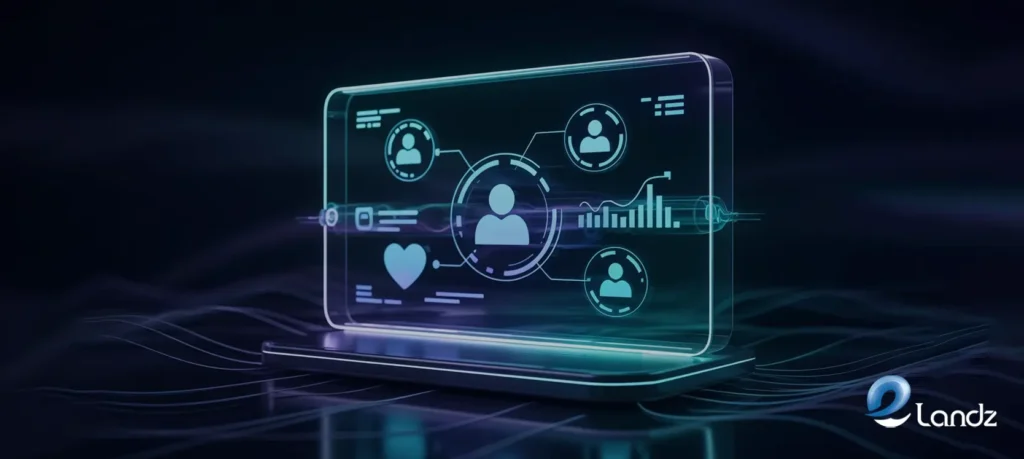
What Is Hyper-Personalization in Marketing and Why Should You Care?
25 Oct 2025Introduction
What is hyper-personalization, and why does it matter so much today? Unlike traditional marketing, which sends the same message to everyone, this approach treats each customer as an individual.
The world of marketing has changed dramatically in recent years. Customers no longer accept generic advertisements or one-size-fits-all promotions. This article explains how hyper-personalization works and why it’s become essential for business success.
Understanding the Basics of Hyper-Personalization
Hyper-personalization goes far beyond basic marketing tactics. It utilizes multiple data sources to gain a deep understanding of customers. The approach combines technology, data analysis, and smart strategy to create meaningful connections.
What Makes It Different from Regular Personalization
Regular personalization might add your first name to an email subject line. It could recommend products based on what you bought last month. Are you still wondering, “What is hyper-personalization?”
It analyzes browsing patterns, location data, and time spent on specific pages. Social media behavior and real-time actions are also examined. All this information is processed instantly to create highly relevant experiences.
The main difference is depth and timing. Basic personalization relies on old information that might be weeks or months outdated. Hyper-personalization responds to what customers are doing right now. This makes interactions feel natural and timely rather than forced or irrelevant.
The Technology Behind the Strategy
Artificial intelligence forms the backbone of successful hyper-personalization. Machine learning algorithms can process huge amounts of customer data in seconds. These technologies spot patterns that humans would never notice manually. The algorithms continuously improve as they gather more information.
Advanced analytics tools track every step in the customer journey. They monitor everything from first website visits to post-purchase follow-ups. This complete view helps businesses understand not just what customers do, but why. Predictive analytics can even anticipate future needs before customers start searching.
Real-Time Data Processing
The “hyper” part comes largely from real-time capabilities. Traditional marketing campaigns might take weeks to plan and launch. This approach adjusts messaging instantly based on current behavior. Someone who abandons their shopping cart might get a notification within minutes. A person browsing winter coats could see promotions before finishing their coffee.
This speed requires sophisticated technical systems. The infrastructure must collect, analyze, and act on data continuously. Cloud computing makes it possible to deliver personalized experiences to millions of customers at once. Each person feels like the only customer that matters.
Why Businesses Should Care About Hyper-Personalization

Modern marketing demands a personalized approach. Customers have grown accustomed to tailored experiences everywhere they go online. Businesses that can’t deliver these experiences will fall behind their competitors.
Meeting Sky-High Customer Expectations
Companies like Netflix, Spotify, and Amazon have trained consumers to expect personalization. The hyper-personalization market was projected to increase from $18.49 billion in 2023 to $21.79 billion in 2024, marking a compound annual growth rate of 17.8%. This explosive growth shows how seriously businesses take customer demands. People no longer tolerate irrelevant advertisements or generic suggestions. They want brands to understand them without lengthy explanations.
When companies fail to provide personalized experiences, customers move on. What is hyper-personalization? It is a marketing trend that has transformed from a nice-to-have feature into a basic requirement.
In many industries, it’s now essential for survival.
Driving Business Results That Matter
Hyper-personalization delivers measurable improvements to business performance. Companies using these strategies typically see higher conversion rates. They show people exactly what they want at the perfect moment. Email campaigns become more effective when they reference recent browsing behavior.
Customer engagement increases dramatically when content feels relevant. People spend more time with brands that demonstrate understanding. This leads to deeper relationships and stronger brand loyalty. Satisfied customers make more purchases and recommend brands to friends.
Reducing Wasted Marketing Spend
Traditional marketing wastes significant resources on the wrong audiences. Messages reach people who have no interest in the products. Hyper-personalization eliminates much of this waste. It ensures marketing dollars target customers who will likely respond positively.
Over 70% of US digital retailers believe AI-driven personalization will affect their business in 2024, making it as important as multi-channel strategies. This widespread adoption shows that personalized approaches deliver better returns. Instead of one campaign for millions, businesses create millions of micro-campaigns. Each one is tailored to individual preferences.
Building Long-Term Customer Loyalty
What is hyper-personalization? It is a way to make customers feel truly understood when brands personalize their experience. This understanding creates emotional connections beyond simple transactions.
Loyal customers become brand advocates who promote products to their networks. They forgive problems more easily and try new offerings willingly. This long-term loyalty proves far more valuable than one-time purchases. It makes hyper-personalization a smart investment in sustainable growth.
Key Components of Successful Hyper-Personalization
Several essential elements must work together for effective hyper-personalization. Each component plays a crucial role in creating seamless, relevant customer experiences.
Unified Customer Data Platforms
Effective personalization requires bringing all customer information together. Customer data platforms combine information from every touchpoint. This includes websites, mobile apps, email campaigns, and social media interactions. Customer service contacts and in-store visits are also included. This unified view shows the complete customer journey.
Without unified data, companies create disjointed experiences. Different departments might contradict each other or repeat the same offers. When all information lives in one place, consistency improves. Everyone from marketing to customer service accesses the same insights.
Advanced Segmentation Strategies
Hyper-personalization aims to treat each customer as an individual. Practical implementation often involves sophisticated segmentation. Rather than broad categories like “men aged 25-34,” advanced segmentation goes deeper. It creates micro-segments based on behavioral patterns and preferences. Purchase frequency, lifetime value, and dozens of other factors are considered.
Behavioral segmentation proves particularly powerful. It focuses on what customers actually do rather than just demographics. Someone who abandons shopping carts receives different messaging than immediate buyers. These insights allow for targeted interventions that address specific patterns.
Predictive Analytics and AI Tools
Artificial intelligence analyzes historical patterns to predict future behavior accurately. These predictions enable proactive marketing that anticipates customer needs. A streaming service might recommend shows based on viewing history. A retailer might suggest reordering products that customers buy monthly.
Machine learning algorithms continuously refine their predictions. They process more data and become more accurate over time. This self-improving nature means personalization efforts become more effective. Better predictions lead to more engagement, which generates more data for even better predictions.
Multi-Channel Consistency
Customers interact with brands across numerous channels. These include email, social media, mobile apps, websites, and physical stores. Hyper-personalization must maintain consistency across all touchpoints. This prevents confusion and frustration. Someone who adds items to their mobile cart should see those items on the website.
This omnichannel approach requires sophisticated technical integration. Data must flow seamlessly between different systems and platforms. When done properly, customers enjoy smooth experiences regardless of interaction method. This strengthens their overall impression and increases satisfaction.
Real-World Applications Across Industries

Different industries apply hyper-personalization in unique ways. Each sector adapts the strategy to fit its specific customer needs and business models.
E-commerce and Retail
Online retailers have led the adoption of hyper-personalization. They collect extensive behavioral data with every customer interaction. Product recommendation engines analyze browsing history and purchase patterns. Items left in carts and hover time on products are also examined. These insights power suggestions that feel surprisingly accurate.
Physical retailers now bring similar capabilities to brick-and-mortar locations. Mobile apps deliver personalized offers when customers enter stores. Location-based targeting highlights products near the shopper’s current position. It can remind them about items viewed online that are available in-store.
Financial Services
Banks and financial institutions offer customized advice based on individual situations. Someone with frequent international transactions might see credit card suggestions with travel rewards. A customer nearing retirement could receive information about wealth management services. These personalized recommendations help customers make better financial decisions.
Proactive fraud detection represents another important application. Systems understand normal spending patterns for each customer. Algorithms quickly identify suspicious transactions that deviate from established behaviors. This improves security while reducing false alarms.
Healthcare and Wellness
Healthcare providers use hyper-personalization to improve patient outcomes. They create customized treatment plans and wellness programs. Health records, genetic information, and wearable device data are analyzed. Treatment responses help medical professionals tailor interventions to individual needs. Patients receive medication reminders and health tips relevant to their conditions.
Wellness apps create personalized fitness routines and nutrition plans. They base recommendations on user data and preferences. These customized programs prove more effective than generic advice. They account for individual constraints, preferences, and progress patterns.
Entertainment and Media
Streaming services have made hyper-personalization central to their user experience. Recommendation algorithms suggest content based on viewing history and ratings. Time of day, device being used, and countless other factors are considered. These platforms continuously test different approaches to drive engagement.
Gaming companies personalize in-game experiences by adjusting difficulty levels. They suggest purchases based on play style. Targeted promotions reach specific player segments. This customization keeps players engaged longer while maximizing revenue opportunities.
Challenges and Considerations
Implementing hyper-personalization comes with significant challenges. Businesses must address these issues carefully to succeed.
Privacy and Data Protection
Extensive data collection raises legitimate privacy concerns. Companies must address these carefully. Regulations like GDPR in Europe and CCPA in California impose strict requirements. These laws govern how customer information can be collected, stored, and used. Companies must obtain explicit consent and provide transparency.
Balancing personalization benefits with privacy protection requires thoughtful implementation. Customers often willingly share data for better experiences. However, they need to understand what information is collected and how it’s used. Brands that handle data responsibly build trust.
Avoiding the Creepiness Factor
A fine line exists between helpful personalization and intrusive surveillance. Recommendations that feel too specific can trigger discomfort. Messages that reference information customers don’t remember sharing can damage brand perception. This “creepiness factor” makes personalization feel like an invasion of privacy.
Smart implementation requires restraint and common sense. Just because a company can reference specific behaviors doesn’t mean it should. Testing different approaches and monitoring customer feedback helps. Businesses can find the sweet spot where personalization feels helpful.
Technical and Resource Requirements
Effective hyper-personalization demands significant technical infrastructure. Specialized expertise and ongoing investment are needed. Smaller businesses might struggle with costs. Advanced analytics platforms, machine learning tools, and data storage systems are expensive. Integration challenges arise when connecting systems that weren’t designed to work together.
However, cloud-based tools have lowered barriers to entry. Many vendors offer personalization capabilities in broader marketing suites. These make technologies accessible to businesses without massive IT budgets.
Maintaining Content Quality at Scale
Creating personalized content for millions of experiences presents obvious challenges. Companies must produce enough variations to cover different segments. Consistent quality and brand voice must be maintained throughout. Automated content generation helps, but human oversight remains necessary.
Regular testing and optimization identify which approaches drive results. A/B testing different messages, offers, and formats provides concrete data. This continuous improvement ensures personalization efforts evolve. They change alongside customer preferences and market conditions.
Implementation Steps for Success
Successful implementation requires a structured approach. Following these steps helps businesses build effective hyper-personalization programs.
Start with Clear Goals and Strategy
Businesses need clear objectives before diving into technical implementation. Are they trying to increase conversion rates or improve customer retention? Perhaps they want to reduce cart abandonment or achieve other specific outcomes. These goals shape which personalization approaches to prioritize.
A comprehensive strategy maps out which touchpoints will receive personalization first. It determines what types of data will be collected and analyzed. The strategy also plans how different systems will integrate. Starting with a focused pilot program allows companies to learn and adjust.
Invest in the Right Technology
Choosing appropriate tools and platforms forms the foundation of success. Customer data platforms that unify information from multiple sources should come first. Analytics tools that process this data to generate insights follow. Marketing automation platforms then use these insights to deliver personalized messages.
What is hyper personalization requires evaluating vendors carefully. Consider integration capabilities, scalability, and ease of use. Available support resources also matter. The best technology stack for one company might not suit another.
Build Your Data Infrastructure
Strong data foundations ensure personalization efforts have accurate information. This involves establishing processes for data collection across all touchpoints. Quality controls maintain accuracy. Governance policies ensure compliance with privacy regulations.
Data security measures protect customer information from breaches. Encryption and access controls limit who can view sensitive details. Regular audits verify that data practices align with stated policies. This maintains customer trust while enabling effective personalization.
Create Personalized Content and Experiences
With strategy, technology, and data in place, businesses can create personalized experiences. This might involve developing dynamic website content that changes based on visitor behavior. Email campaigns can reference recent interactions. Mobile app experiences can adapt to usage patterns.
Testing different personalization approaches identifies what resonates with various audiences. Some customers respond better to product recommendations. Others prefer educational content or exclusive offers. Understanding these preferences allows for increasingly refined personalization.
Monitor, Measure, and Optimize
Successful hyper-personalization requires ongoing monitoring and optimization. Analytics dashboards track key performance indicators. These include conversion rates, engagement metrics, and customer lifetime value. Return on investment is also measured. These measurements show which efforts deliver results.
Regular review sessions examine performance data to identify patterns. They spot opportunities for improvement. Machine learning algorithms continuously refine their predictions. However, human analysis remains valuable for spotting larger trends.
The Future of Hyper-Personalization

The evolution of hyper-personalization continues rapidly. New technologies and approaches constantly emerge to enhance customer experiences.
Emerging Technologies and Capabilities
Advances in AI, augmented reality, virtual reality, and Internet of Things devices expand possibilities. Smart home devices understand household preferences. Augmented reality apps visualize products in customers’ actual spaces. AI assistants anticipate needs before they’re expressed. All represent the next evolution of personalized experiences.
Voice-activated shopping assistants and visual search technologies allow more natural interactions. These interfaces collect new types of behavioral data. This further refines personalization algorithms. Even more relevant recommendations and experiences result.
Predictive and Anticipatory Engagement
Future implementations will increasingly focus on anticipating customer needs early. Rather than waiting for someone to search for winter coats, algorithms might proactively suggest them. Seasonal patterns, weather forecasts, and past purchase timing inform these suggestions.
Predictive models will become more sophisticated at identifying life events. Moving, starting a new job, or having a baby affects purchasing behavior. People might receive relevant product suggestions before actively shopping.
Ethical Considerations and Responsible Use
As personalization capabilities grow more powerful, ethical considerations become increasingly important. Companies must balance business objectives with respect for customer autonomy. Transparent communication about data practices is essential. Meaningful consent mechanisms and easy opt-out options help.
Industry standards and best practices continue evolving. They address concerns about algorithmic bias, data security, and customer welfare. Businesses that prioritize responsible implementation build stronger relationships. Customers appreciate being treated with respect rather than simply being mined for profit.
Conclusion
What is hyper-personalization, and how has it evolved? It has changed from an experimental tactic into a fundamental requirement. It shapes how successful companies interact with their customers today. By combining real-time data, artificial intelligence, and deep customer insights, this approach creates remarkably relevant experiences.
The benefits extend far beyond customer satisfaction scores. Hyper-personalization drives measurable improvements in conversion rates and customer loyalty. Marketing efficiency and long-term profitability also improve significantly.
Implementation challenges around privacy, technical complexity, and content creation require careful attention. However, increasingly accessible tools have made sophisticated personalization achievable.
FAQs
Check out this FAQ section!
How is hyper-personalization different from regular personalization?
Regular personalization typically uses basic information like names and past purchases. It customizes marketing messages in simple ways. Hyper-personalization goes much deeper by analyzing real-time behavior and contextual factors.
What kind of data is needed for hyper-personalization?
Effective hyper-personalization draws on multiple data sources. These include browsing history, purchase patterns, and email engagement. Social media activity, location information, and device usage matter too.
What is hyper-personalization's impact on customer privacy?
Privacy concerns represent legitimate considerations that businesses must address. Companies need to collect data transparently and obtain proper consent. Clear explanations of how information will be used are essential.
Can small businesses implement hyper-personalization effectively?
Increasingly accessible tools now enable smaller businesses to implement similar strategies. Cloud-based marketing automation services and customer data platforms designed for smaller operations help.
How long does it take to see results from hyper-personalization?
The timeline for results varies based on several factors. Implementation complexity, data availability, and organizational readiness all matter.
What industries benefit most from hyper-personalization?
Hyper-personalization can benefit virtually any industry. E-commerce, retail, financial services, healthcare, entertainment, and travel have seen particularly strong results.


